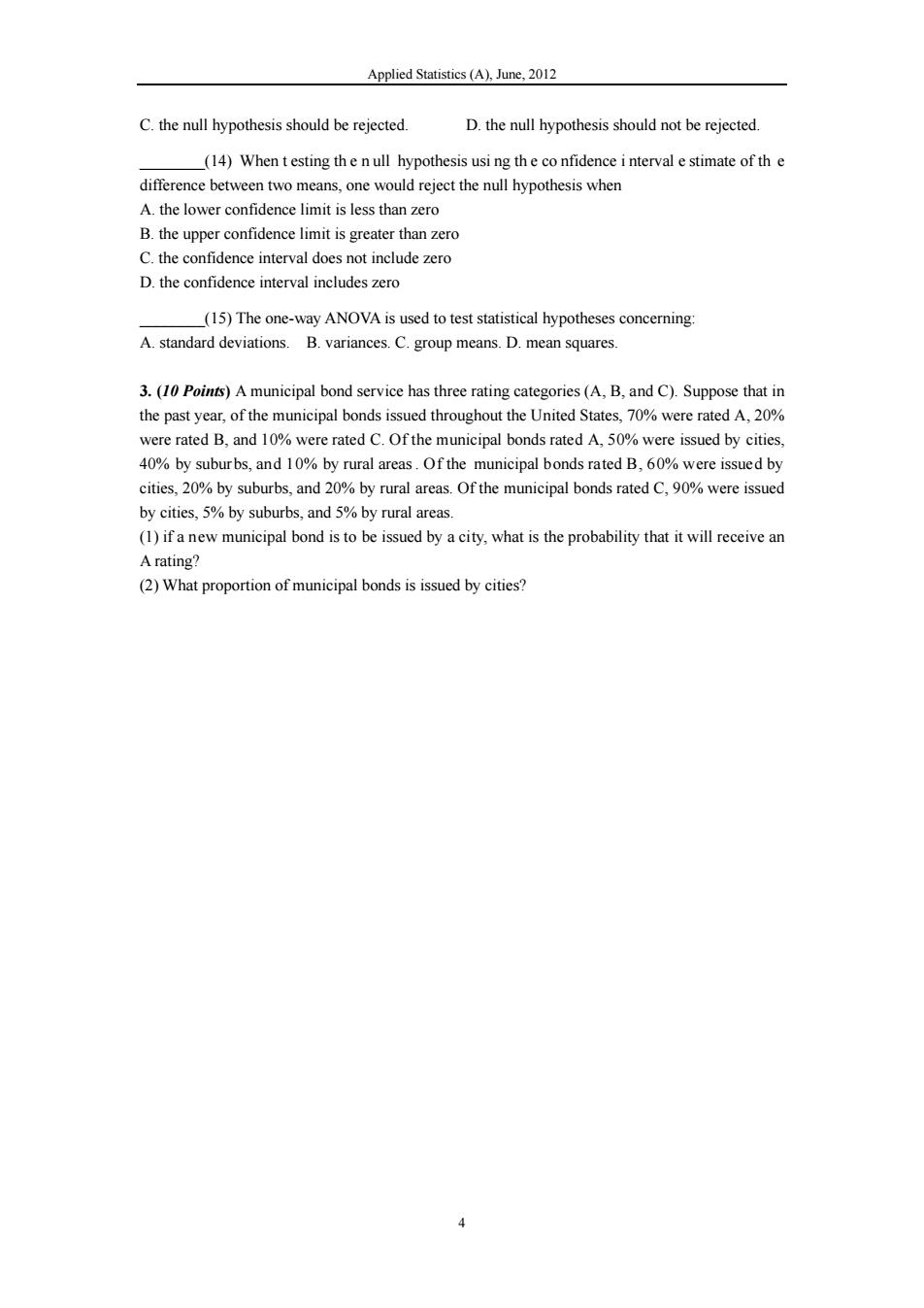正在加载图片...

Applied Statistics (A).June.201 C.the null hypothesis should be rejected. D.the null hypothesis should not be rejected. (14)When testing the hypothesis using interval estimate of th difference between two means,one would reject the null hypothesis when A.the lower confidence limit is less than zero B.the upper confidence limit is greater than zero C.the confidence interval does not include zero D.the confidence interval includeszer (15)The one-way ANOVA is used to test statistical hypotheses concerning: A.standard deviations.B.variances.C.group means.D.mean squares. 3.()A municipal bond service has three rating categories(A.B.and C).Suppose that in the past year of the tedA.20% were rated B.%were rated C.Ofthe municipal bonds rated A.5%were issued by cities 40%by suburbs,and 10%by rural areas.Of the municipal bonds rated B.60%were issued by cities,20%by suburbs,and 20%by rural areas.Ofthe municipal bonds rated C%were issued by cities.5%by suburbs.and 5%by rural areas. (1)ifanew municipal bond is to be issued by acity.what is the probability that it will receive an A rating? (2)What proportion of municipal bonds is issued by cities?Applied Statistics (A), June, 2012 4 C. the null hypothesis should be rejected. D. the null hypothesis should not be rejected. ________(14) When t esting th e n ull hypothesis usi ng th e co nfidence i nterval e stimate of th e difference between two means, one would reject the null hypothesis when A. the lower confidence limit is less than zero B. the upper confidence limit is greater than zero C. the confidence interval does not include zero D. the confidence interval includes zero ________(15) The one-way ANOVA is used to test statistical hypotheses concerning: A. standard deviations. B. variances. C. group means. D. mean squares. 3. (10 Points) A municipal bond service has three rating categories (A, B, and C). Suppose that in the past year, of the municipal bonds issued throughout the United States, 70% were rated A, 20% were rated B, and 10% were rated C. Of the municipal bonds rated A, 50% were issued by cities, 40% by suburbs, and 10% by rural areas . Of the municipal bonds rated B, 60% were issued by cities, 20% by suburbs, and 20% by rural areas. Of the municipal bonds rated C, 90% were issued by cities, 5% by suburbs, and 5% by rural areas. (1) if a new municipal bond is to be issued by a city, what is the probability that it will receive an A rating? (2) What proportion of municipal bonds is issued by cities?